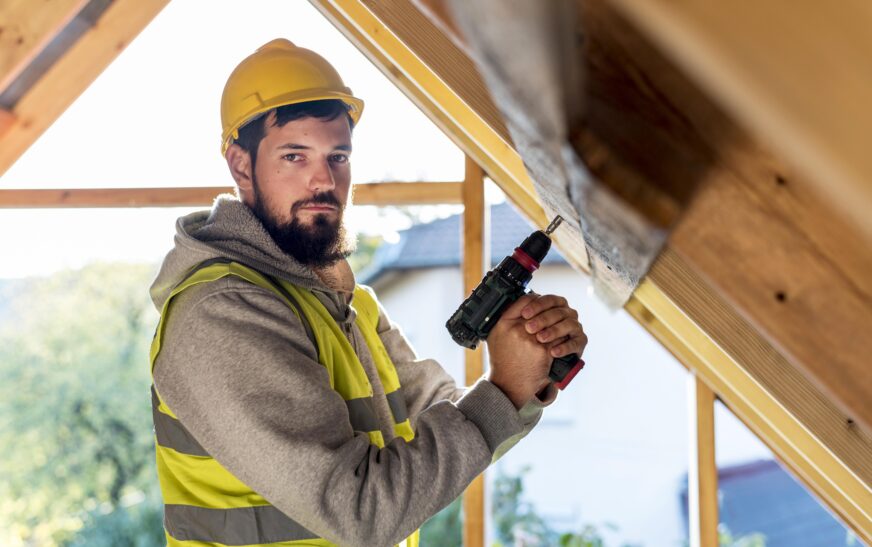If you’ve ever wondered why your home is chilly in the winter and sweltering in the summer, or why your energy bills are through the roof, the answer might be right above your head—in your attic. Attic insulation is one of the most effective ways to improve your home’s energy efficiency, reduce your utility bills, and create a more comfortable living environment. Let’s dive into everything you need to know about attic insulation, from its benefits to the different types available, and how to install it yourself or choose a professional service.
Why Insulate Your Attic?
Before we get into the nitty-gritty of insulation types and installation tips, let’s talk about why insulating your attic is so crucial.
1. Energy Efficiency
A well-insulated attic acts as a barrier that keeps your home’s temperature stable, reducing the need for heating in the winter and cooling in the summer. This means your HVAC system doesn’t have to work as hard, leading to significant energy savings.
2. Cost Savings
Since your heating and cooling systems are working more efficiently, you’ll notice a reduction in your energy bills. Insulating your attic can save you up to 15% on your heating and cooling costs.
3. Comfort
Proper insulation keeps your home at a consistent temperature throughout the year. No more drafty rooms in the winter or stuffy spaces in the summer.
4. Environmental Impact
By using less energy to heat and cool your home, you’re reducing your carbon footprint. Insulating your attic is a small step that makes a big difference for the environment.
5. Home Value
Energy efficiency is a desirable feature for home buyers. A well-insulated home can have a higher resale value.
Types of Attic Insulation
There are several types of insulation you can use in your attic, each with its own advantages and disadvantages. Let’s break them down:
1. Fiberglass Batt Insulation
- Description: These are pre-cut panels of fiberglass insulation.
- Pros: Easy to install, affordable, widely available.
- Cons: Less effective at sealing air leaks, can leave gaps.
2. Blown-In Insulation (Loose-Fill)
- Description: This type of insulation is blown into the attic using special equipment.
- Pros: Great for filling irregular or hard-to-reach spaces, provides good coverage.
- Cons: Requires special equipment for installation, can settle over time.
3. Spray Foam Insulation
- Description: A liquid foam that expands and hardens after being sprayed.
- Pros: Excellent air sealing properties, very effective.
- Cons: More expensive, requires professional installation.
4. Foam Board Insulation
- Description: Rigid panels of insulation that can be cut to fit.
- Pros: High insulating value, good for attics with limited space.
- Cons: Can be difficult to install around irregular shapes and sizes.
5. Radiant Barriers
- Description: Reflective materials that reduce heat transfer.
- Pros: Particularly effective in hot climates, helps keep the attic cooler.
- Cons: Less effective in colder climates, doesn’t provide traditional insulation benefits.
DIY vs. Professional Installation
Once you’ve decided on the type of insulation, the next step is installation. You have two main options: do it yourself or hire a professional. Here are some factors to consider:
DIY Installation
- Pros:
- Cost savings on labor.
- Flexibility to work on your own schedule.
- Great for small or straightforward projects.
- Cons:
- Can be physically demanding.
- Requires time and effort to learn proper installation techniques.
- Risk of improper installation, which can reduce effectiveness.
Professional Installation
- Pros:
- Expert knowledge and experience.
- Efficient and fast installation.
- Guarantees proper installation and maximum effectiveness.
- Cons:
- Higher upfront cost.
- Need to schedule and coordinate with contractors.
Steps for DIY Attic Insulation Installation
If you decide to go the DIY route, here’s a step-by-step guide to help you through the process:
1. Assess Your Current Insulation
Before adding new insulation, check what you already have. Measure the depth and identify the type of existing insulation. This will help you determine how much more you need.
2. Calculate How Much Insulation You Need
Measure the square footage of your attic. Insulation is rated by its R-value, which measures its resistance to heat flow. The higher the R-value, the better the insulation. Your local climate will dictate the recommended R-value.
3. Gather Your Materials
Depending on the type of insulation you choose, you’ll need the following tools and materials:
- Insulation (batt, loose-fill, foam, etc.)
- Protective gear (gloves, mask, goggles)
- Utility knife (for batt insulation)
- Staple gun (for batt insulation)
- Blower (for loose-fill insulation)
- Sealant (for air leaks)
4. Prepare the Attic
- Clear the attic of any obstructions.
- Seal any air leaks with caulk or foam sealant.
- Ensure proper ventilation to prevent moisture buildup.
5. Install the Insulation
- For Batt Insulation: Lay the batts between the joists, cutting them to fit snugly.
- For Loose-Fill Insulation: Use the blower to evenly distribute the insulation.
- For Spray Foam: Apply the foam using the spray gun, ensuring even coverage.
6. Inspect Your Work
After installation, check for any gaps or areas that might need more insulation. Ensure that the insulation is evenly distributed and covers all intended areas.
Maintaining Your Attic Insulation
Once your insulation is installed, it’s important to maintain it to ensure it continues to perform well.
1. Regular Inspections
Check your attic insulation at least once a year. Look for signs of moisture, mold, or pest damage.
2. Address Issues Promptly
If you notice any problems, address them immediately. Replace damaged insulation and seal any new air leaks.
3. Upgrade When Necessary
Over time, insulation can settle or degrade. If you notice a decline in performance, it might be time to add more insulation or upgrade to a better type.
Final Thoughts
Attic insulation is a smart investment that pays off in comfort, energy savings, and home value. Whether you choose to tackle the project yourself or hire a professional, understanding the different types of insulation and the installation process will help you make the best decision for your home. So, take a step towards a more comfortable and energy-efficient home by ensuring your attic is properly insulated. You’ll be glad you did when you see the difference it makes in your comfort and energy bills.
Feel free to submit more guest posts through Links Building Servcies - Best Prices. Buy Author Account / 1$ Guest Post Here




![How to transfer money from Robinhood to bank account? [Steps]](https://hollywoodrag.com/wp-content/uploads/2024/08/Banking-Across-Europe.jpg)


















